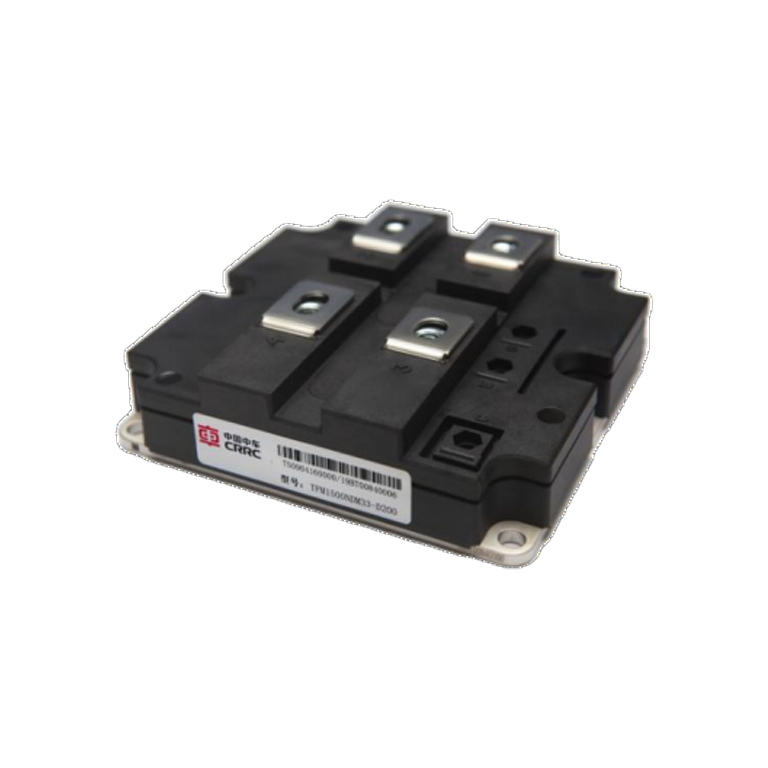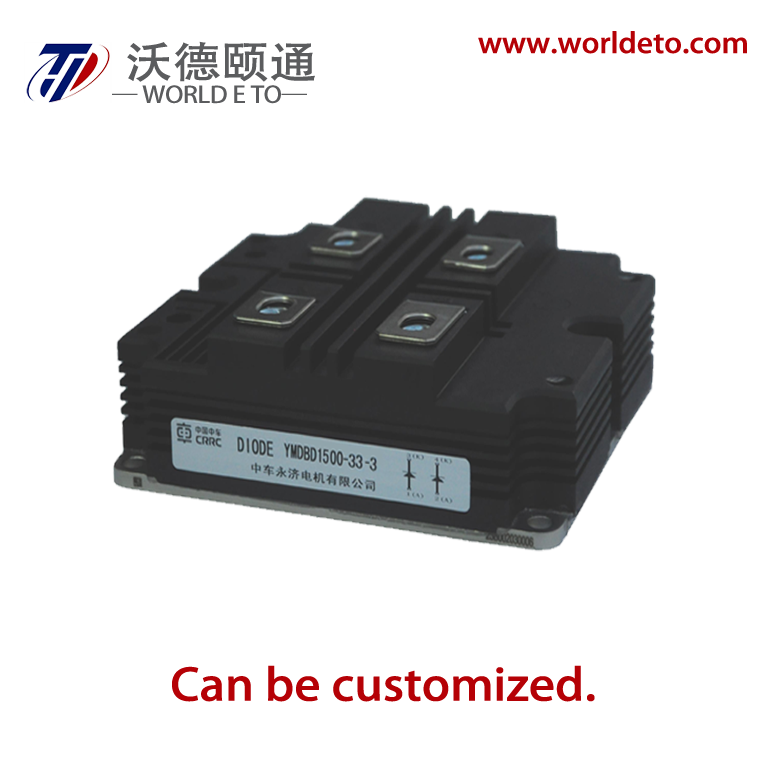Comprensión de las señales críticas de degradación de componentes de electrónica de potencia
En aplicaciones industriales y de electrónica de potencia, modulo de diodo el fallo representa uno de los desafíos más críticos a los que se enfrentan los ingenieros de mantenimiento y operadores del sistema. Estos componentes esenciales son la base de los sistemas de conversión de energía, y su fallo inesperado puede provocar retrasos costosos en la producción y daños al sistema. Comprender las señales de advertencia tempranas e implementar adecuados procedimientos de mantenimiento es crucial para garantizar la fiabilidad y longevidad del sistema.
La creciente complejidad de los sistemas eléctricos modernos ha hecho más importante que nunca mantenerse vigilante respecto a la salud del módulo de diodos. Desde la fabricación industrial hasta las instalaciones de energía renovable, estos componentes desempeñan un papel fundamental en la conversión y el control de la energía eléctrica. Cuando ocurre una falla en el módulo de diodos, las consecuencias pueden propagarse por todo el sistema, posiblemente causando daños catastróficos al equipo y tiempos de inactividad significativos.
Indicadores de Advertencia Temprana de Deterioro del Módulo de Diodos
Indicadores Visuales y Físicos
La inspección física suele proporcionar las primeras pistas de una falla inminente del módulo de diodos. La decoloración o ennegrecimiento del estuche del módulo típicamente indica exposición excesiva al calor, mientras que la presencia de abultamientos o deformaciones sugiere tensión en los componentes internos. La presencia de marcas de quemaduras o un olor a quemado cerca del estuche del módulo requiere atención inmediata, ya que estos signos suelen anteceder al fallo completo.
La contaminación superficial, como la acumulación de polvo o la corrosión en los terminales, puede acelerar el deterioro. Las inspecciones visuales regulares deben centrarse en la integridad de las conexiones de los terminales, verificando signos de oxidación o conexiones sueltas que puedan comprometer la calidad del contacto eléctrico.
Cambios en el rendimiento eléctrico
Los cambios sutiles en los parámetros eléctricos suelen preceder a la falla del módulo de diodo. Un aumento en la corriente de fuga, caídas de voltaje inesperadas o un comportamiento irregular en la conmutación pueden indicar una degradación en la salud del módulo. Los sistemas modernos de monitoreo pueden detectar estas variaciones mediante mediciones periódicas de rendimiento y análisis de tendencias.
Las fluctuaciones de temperatura durante la operación merecen atención especial. Si un módulo funciona consistentemente más caliente que su rango de operación especificado, esto podría indicar cambios en la resistencia interna o deficiencias en el sistema de enfriamiento que podrían provocar una falla prematura.
Estrategias de mantenimiento preventivo para prolongar la vida útil del módulo
Protocolos regulares de inspección y pruebas
La implementación de un programa estructurado de mantenimiento es esencial para prevenir fallos inesperados del módulo diodo. Esto debe incluir inspecciones visuales programadas, estudios termográficos y pruebas de parámetros eléctricos. Los intervalos de mantenimiento deben basarse en las condiciones de operación, factores ambientales y las recomendaciones del fabricante.
Técnicas avanzadas de prueba, como el análisis de descargas parciales y las mediciones de características de conmutación, pueden proporcionar información valiosa sobre la salud del módulo. Estas pruebas ayudan a identificar deterioro antes de que progrese hasta el fallo, permitiendo un reemplazo planificado en lugar de reparaciones de emergencia.
Medidas de Control Ambiental
Crear y mantener condiciones óptimas de operación reduce significativamente el riesgo de fallo del módulo diodo. El control de la temperatura es fundamental: la ventilación adecuada, el mantenimiento del sistema de refrigeración y la limpieza del disipador de calor desempeñan roles cruciales. Los factores ambientales, como la humedad, el polvo y la vibración, deben monitorearse y controlarse dentro de los límites especificados.
La instalación de dispositivos adecuados de protección contra sobretensiones y sistemas adecuados de puesta a tierra ayuda a proteger los módulos contra esfuerzos eléctricos. La limpieza regular de disipadores de calor y las vías de ventilación asegura una disipación eficiente del calor, crucial para prevenir fallos relacionados con el calor.
Técnicas y Herramientas Avanzadas de Diagnóstico
Análisis por Termografía
Las cámaras modernas de termografía proporcionan información valiosa sobre el estado de los módulos de diodos al revelar puntos calientes y patrones inusuales de temperatura. Escaneos térmicos regulares pueden detectar problemas emergentes antes de que conduzcan a fallos completos del módulo de diodos. Comprender los patrones térmicos y establecer mediciones de referencia ayuda a los equipos de mantenimiento a identificar condiciones anormales rápidamente.
La interpretación correcta de imágenes térmicas requiere formación y experiencia. Gradientes de temperatura, puntos calientes y lecturas comparativas entre módulos similares pueden proporcionar toda la información crucial sobre el estado del módulo y posibles modos de fallo.
Sistemas Digitales de Monitoreo
La integración de sistemas de monitoreo digital permite el seguimiento continuo de los parámetros de rendimiento del módulo. Estos sistemas pueden monitorear caídas de voltaje, flujo de corriente y características de conmutación en tiempo real, proporcionando una alerta temprana sobre problemas emergentes. El análisis avanzado puede identificar tendencias y patrones que podrían indicar un fallo inminente del módulo de diodo.
Las capacidades de registro y análisis de datos permiten estrategias de mantenimiento predictivo, ayudando a los equipos de mantenimiento a optimizar sus horarios de inspección y reemplazo. Este enfoque minimiza tanto los fallos inesperados como los reemplazos preventivos innecesarios.
Mejores Prácticas para Reemplazo y Actualización de Módulos
Procedimientos de Instalación Correctos
Cuando sea necesario el reemplazo, es fundamental seguir los procedimientos adecuados de instalación para prevenir fallos prematuros del módulo de diodo. Esto incluye el par de apriete correcto aplicación en los componentes de montaje, la aplicación adecuada del compuesto térmico y la manipulación cuidadosa de los componentes. Las conexiones limpias y la preparación adecuada de los terminales aseguran un contacto eléctrico óptimo.
La documentación de los procedimientos de instalación, incluyendo los valores de torque, tipo de compuesto térmico y mediciones eléctricas, proporciona información de referencia valiosa para actividades futuras de mantenimiento. Seguir las directrices del fabricante en cuanto a instalación y procedimientos de rodaje ayuda a garantizar la máxima vida útil del módulo.
Oportunidades de Optimización del Sistema
El reemplazo de módulos representa una oportunidad para optimizar el desempeño del sistema. Actualizarse a diseños más nuevos de módulos puede ofrecer una eficiencia mejorada, mejores características térmicas o una fiabilidad incrementada. La evaluación de los requisitos del sistema y las condiciones de operación ayuda a identificar posibles mejoras durante el reemplazo.
Considere implementar capacidades adicionales de monitoreo o características de protección al actualizar los módulos. Los módulos modernos suelen incluir capacidades de diagnóstico integradas que pueden mejorar los programas de mantenimiento y prevenir fallas futuras.
Preguntas Frecuentes
¿Con qué frecuencia se deben inspeccionar los módulos de diodos en busca de signos potenciales de falla?
Las inspecciones regulares deben realizarse mensualmente para aplicaciones críticas, con evaluaciones más detalladas cada trimestre. Sin embargo, los intervalos específicos de inspección deben ajustarse según las condiciones de operación, el entorno y las recomendaciones del fabricante. Las aplicaciones de alto esfuerzo pueden requerir un monitoreo más frecuente.
¿Cuáles son las causas más comunes de falla prematura en módulos diodo?
Las causas principales incluyen estrés térmico debido a un enfriamiento inadecuado, sobrecarga eléctrica provocada por picos de voltaje o condiciones de sobrecarga, prácticas deficientes de instalación y factores ambientales como humedad excesiva o contaminación. El mantenimiento regular y unas condiciones adecuadas de operación pueden resolver la mayoría de estos problemas.
¿Cómo puede ayudar el uso de imágenes térmicas a prevenir la falla de módulos diodo?
La termografía permite la detección temprana de problemas en desarrollo al identificar patrones inusuales de temperatura o puntos calientes. Escaneos térmicos regulares pueden revelar problemas tales como conexiones deficientes, degradación interna o fallos en el sistema de refrigeración antes de que conduzcan a una falla completa. Esta técnica no invasiva es especialmente valiosa para programas de mantenimiento predictivo.
¿Qué pasos se deben tomar inmediatamente cuando se detectan signos de deterioro del módulo?
Al detectar signos de deterioro, primero documente todas las observaciones y mediciones. Luego, evalúe la gravedad de la condición y su posible impacto en la operación del sistema. Elabore un plan de acción que pueda incluir un monitoreo incrementado, reducción de carga o reemplazo programado. Siempre considere la criticidad del sistema al determinar el momento de la respuesta.
Tabla de Contenido
- Comprensión de las señales críticas de degradación de componentes de electrónica de potencia
- Indicadores de Advertencia Temprana de Deterioro del Módulo de Diodos
- Estrategias de mantenimiento preventivo para prolongar la vida útil del módulo
- Técnicas y Herramientas Avanzadas de Diagnóstico
- Mejores Prácticas para Reemplazo y Actualización de Módulos
-
Preguntas Frecuentes
- ¿Con qué frecuencia se deben inspeccionar los módulos de diodos en busca de signos potenciales de falla?
- ¿Cuáles son las causas más comunes de falla prematura en módulos diodo?
- ¿Cómo puede ayudar el uso de imágenes térmicas a prevenir la falla de módulos diodo?
- ¿Qué pasos se deben tomar inmediatamente cuando se detectan signos de deterioro del módulo?


